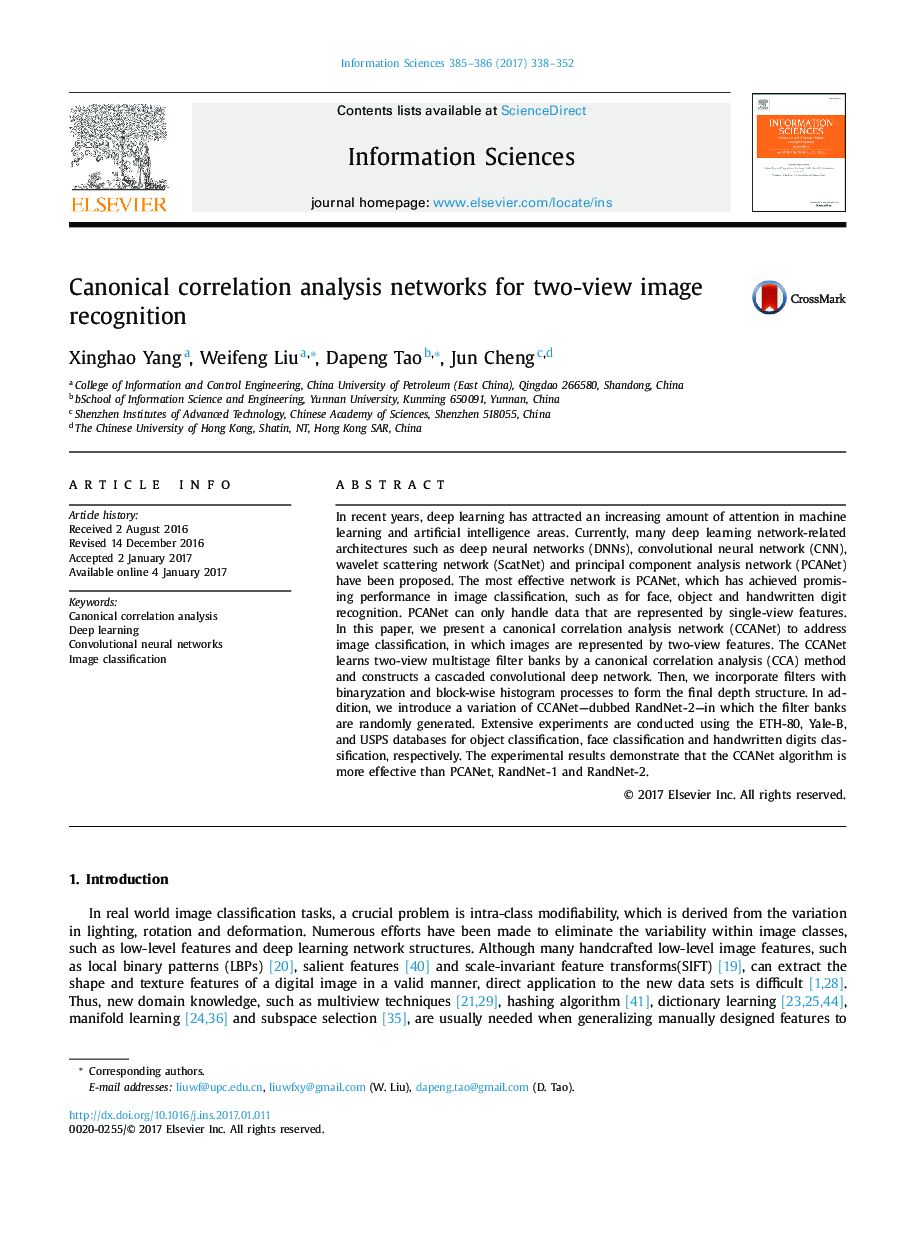| Article ID | Journal | Published Year | Pages | File Type |
|---|---|---|---|---|
| 4944740 | Information Sciences | 2017 | 15 Pages |
Abstract
In recent years, deep learning has attracted an increasing amount of attention in machine learning and artificial intelligence areas. Currently, many deep learning network-related architectures such as deep neural networks (DNNs), convolutional neural network (CNN), wavelet scattering network (ScatNet) and principal component analysis network (PCANet) have been proposed. The most effective network is PCANet, which has achieved promising performance in image classification, such as for face, object and handwritten digit recognition. PCANet can only handle data that are represented by single-view features. In this paper, we present a canonical correlation analysis network (CCANet) to address image classification, in which images are represented by two-view features. The CCANet learns two-view multistage filter banks by a canonical correlation analysis (CCA) method and constructs a cascaded convolutional deep network. Then, we incorporate filters with binaryzation and block-wise histogram processes to form the final depth structure. In addition, we introduce a variation of CCANet-dubbed RandNet-2-in which the filter banks are randomly generated. Extensive experiments are conducted using the ETH-80, Yale-B, and USPS databases for object classification, face classification and handwritten digits classification, respectively. The experimental results demonstrate that the CCANet algorithm is more effective than PCANet, RandNet-1 and RandNet-2.
Keywords
Related Topics
Physical Sciences and Engineering
Computer Science
Artificial Intelligence
Authors
Xinghao Yang, Weifeng Liu, Dapeng Tao, Jun Cheng,
